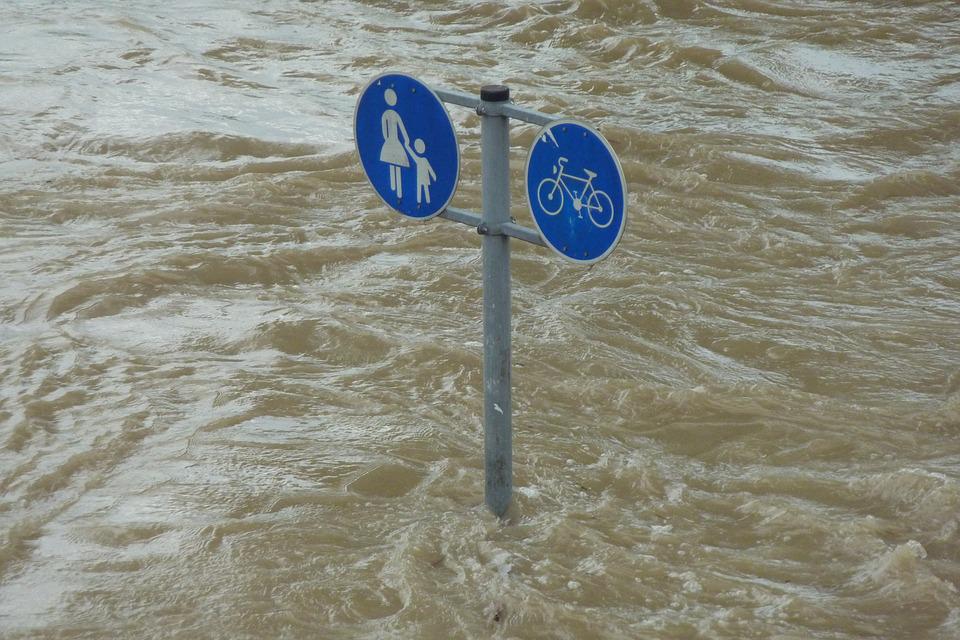
©https://pixabay.com/photos/flood-sign-downfall-water-flooding-392707/
Pre-reading questions:
I will read each question. Then, please answer them.
- What are the things that you will do if you experience flooding in your area?
- Do you think flooding has advantages? Why or why not?
Vocabulary:
I will read the words, meanings, and sample sentences. Then, repeat after me.
- advise /ad-VAHYZ/
- threat /THRET/
- severe /suh-VEER/
- media /MEE-dee-uh/
- rapidly /RAP-id-lee/
[verb] – to give someone advice
I’d strongly advise against making a sudden decision.
[noun] – a suggestion that something unpleasant or violent will happen, especially if a particular action or order is not followed
Her parents carried out their threat to take away her mobile phone if her grades didn’t improve.
[adjective] – causing very great pain, difficulty, worry, damage, etc.; very serious
This is a school for children with severe learning difficulties.
[noun] – the internet, newspapers, magazines, television, etc., considered as a group
The issue has been much discussed in the media.
[adverb] – in a fast or sudden way
Things are changing very rapidly.
Article reading:
Please read the whole article. Then, I will check your pronunciation and intonation.
Authorities advised thousands of residents to leave their homes due to a flood in Sydney, Australia last Monday, July 4. There have been eighteen evacuation orders on the western side of the city, with more expected. Stephanie Cooke, the New South Wales emergency services minister, says, “This is a life-threatening emergency.” In March, severe flooding in Australia affected many people, mostly in NSW. Ms. Cooke told the media that “we face multiple dangers,” including flash flooding, riverine flooding, and coastal erosion. The Bureau of Meteorology said that some places could get up to three hundred fifty millimeters of rain, which would put a known river in danger. Sydney’s primary dam began overflowing overnight, causing further concern. Ms. Cooke warned people to “be prepared to evacuate at short notice” because the situation was “rapidly evolving.”
She said emergency services had carried out eighty-three flood rescues in twenty-four hours. “It shows that people aren’t heeding our advice,” Ms. Cooke said. “We will continue to issue flood advice.” “Please don’t travel unless absolutely necessary,” Climate change and La Niña may have exacerbated the flooding emergency. La Niña occurs when strong winds blow warm Pacific Ocean surface waters from South America to Indonesia. Low-temperature waters rise in their absence. Australia’s chances of rain, cyclones, and cooler daytime temperatures increase with La Niña.
She said emergency services had carried out eighty-three flood rescues in twenty-four hours. “It shows that people aren’t heeding our advice,” Ms. Cooke said. “We will continue to issue flood advice.” “Please don’t travel unless absolutely necessary,” Climate change and La Niña may have exacerbated the flooding emergency. La Niña occurs when strong winds blow warm Pacific Ocean surface waters from South America to Indonesia. Low-temperature waters rise in their absence. Australia’s chances of rain, cyclones, and cooler daytime temperatures increase with La Niña.
Comprehension questions
I will read each question. Then, please answer them based on the article.
- How many evacuation orders have been placed in the location of the flooding?
- What organization stated that there could be three hundred fifty millimeters of rain?
- Where did the flooding happen?
- Who is the individual who warned people to evacuate at short notice?
- When was the last month when severe flooding in Australia affected many people?
Discussion questions
I will read each question. Then, please answer them.
- Can you share an event when you encountered a storm in your area?
- Flooding is a natural occurrence. Have you experienced one? If so, how did you deal with it? If no, how will you make sure that you are prepared once it happens?
- If you are a weather journalist, how will you explain to people the importance of natural disaster preparedness?
- Do you agree that preparing for natural disasters is a necessity for people?
- How will you explain to children the importance of natural disaster preparedness?